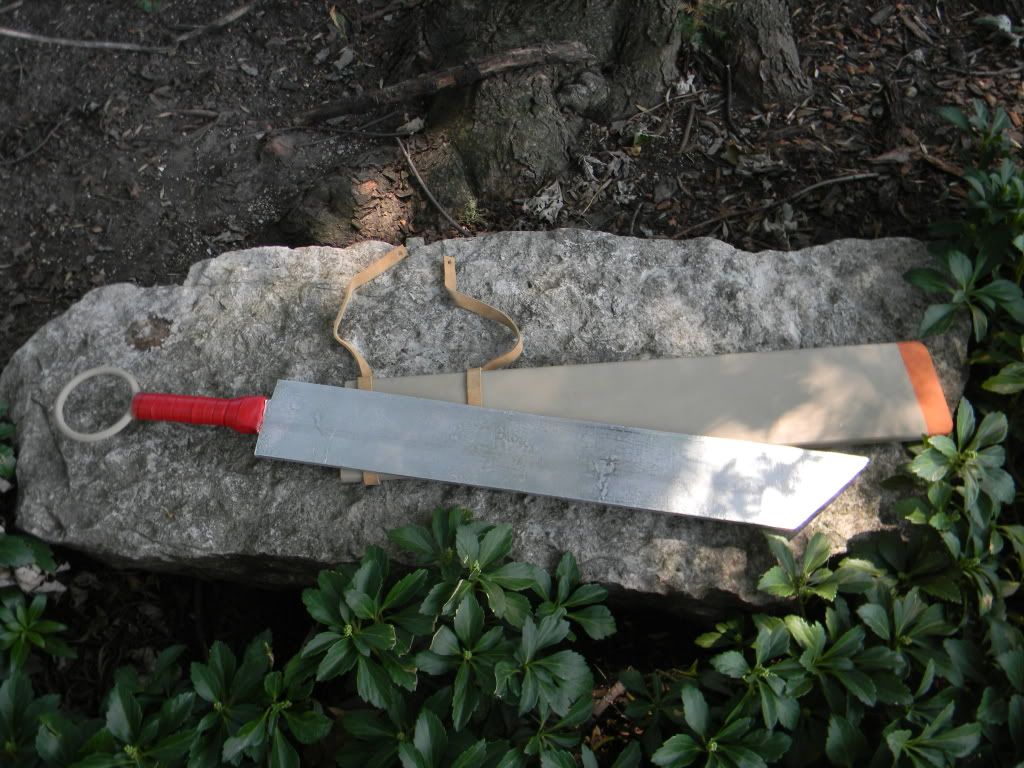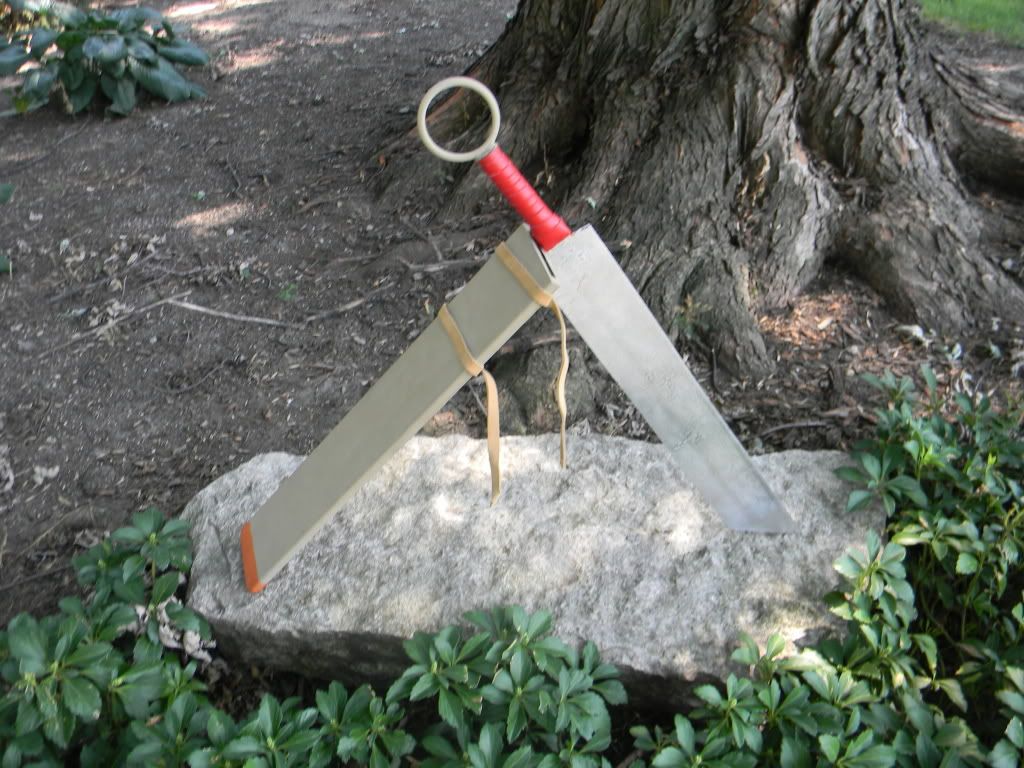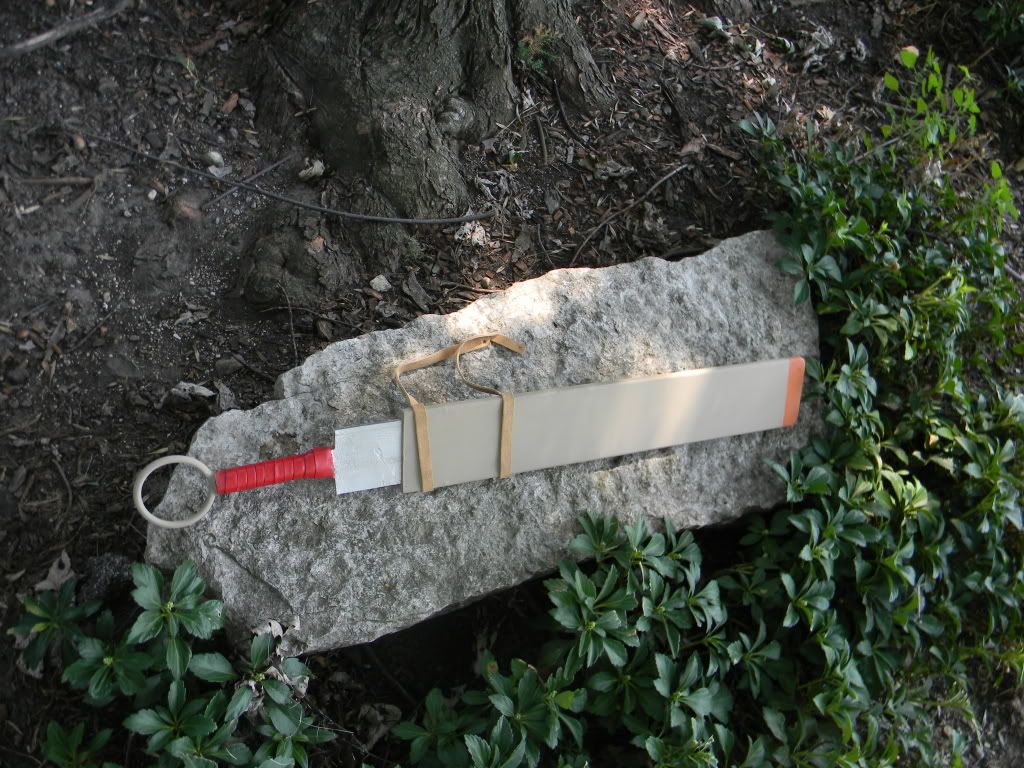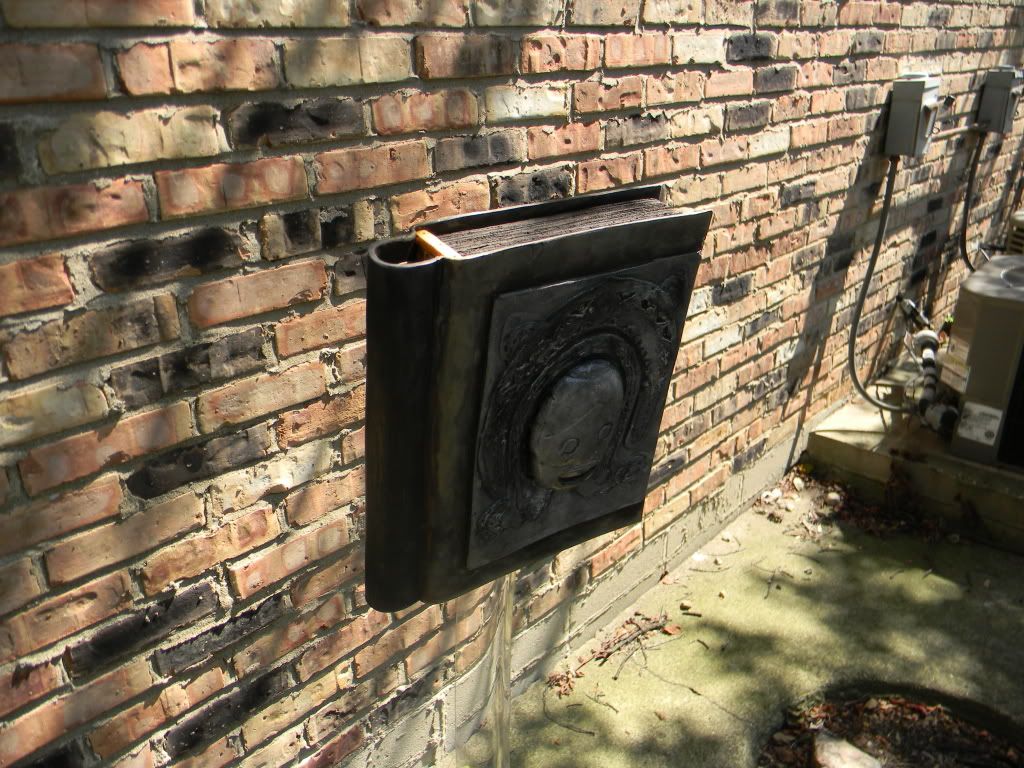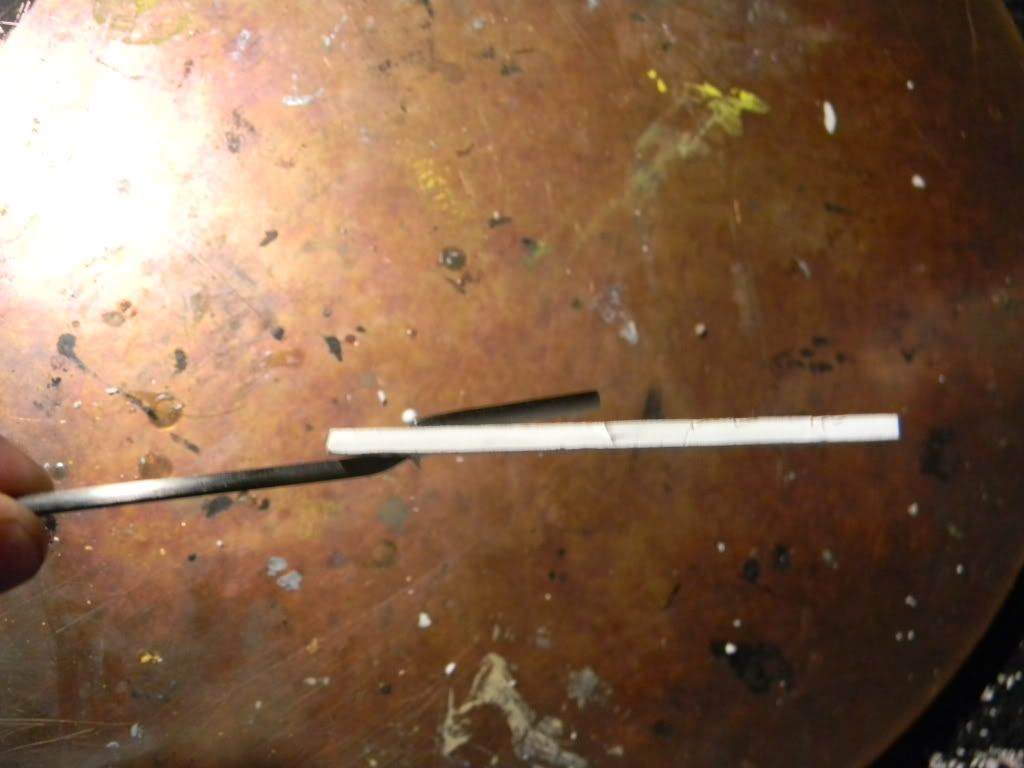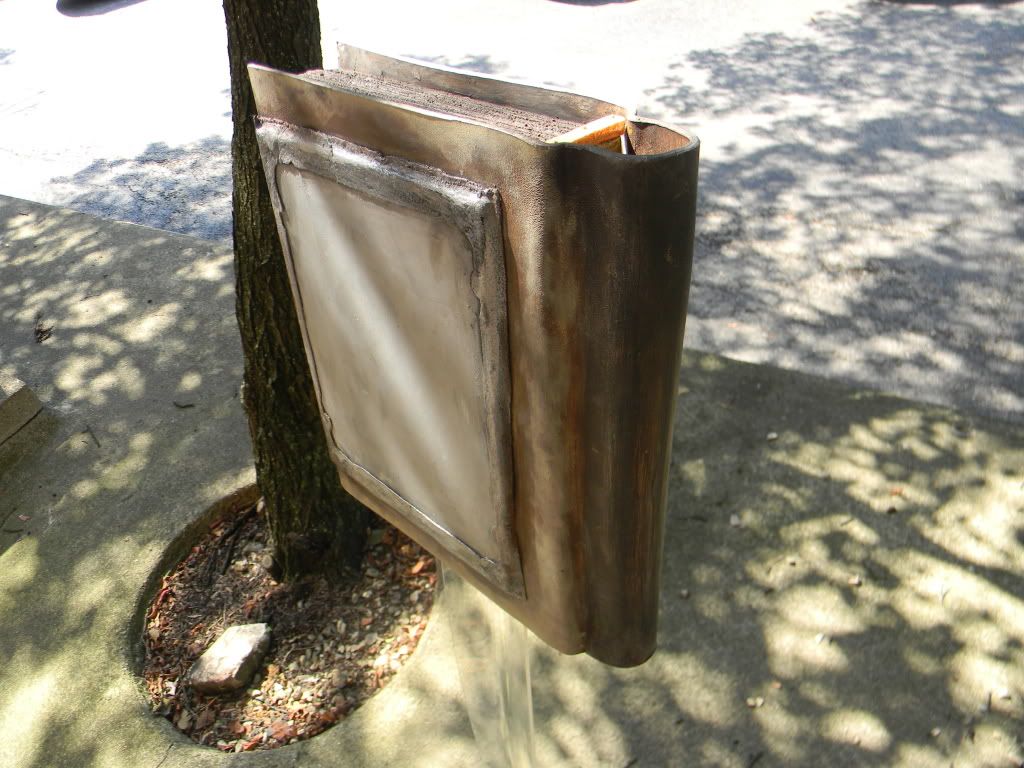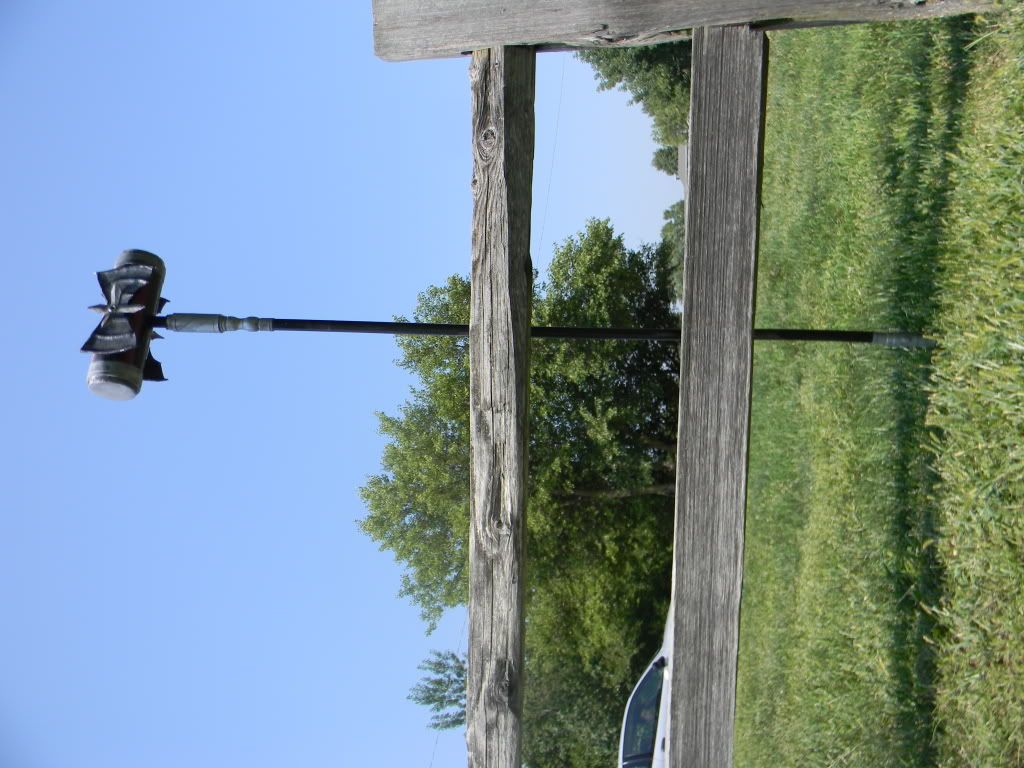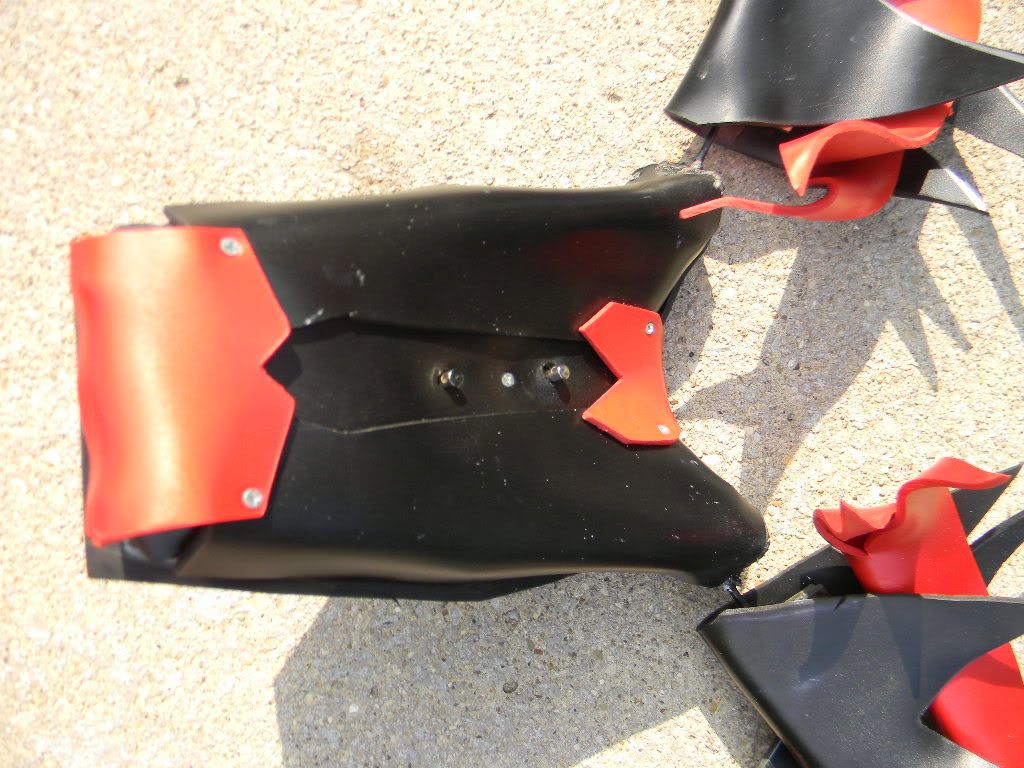This book was made for a person who suggested it as a prop. The premise behind this book would be that it would look like it was floating. The person who wanted the book suggested that we use acrylic but that really didn’t work because it would be too heavy if it was made purely out of acrylic. He also wanted to make sure that it bounced and looked like it was moving while it was floating. You can find all the videos corresponding with this prop on Youtube at http://www.youtube.com/user/FinalCosplayCorps/search?query=Creepy+Book .
The list of materials I used are as follows: 1 inch eps foam, 1/4 inch eps foam, 1/4th inch MDF, twist ties, poster board, 1 carbon fiber rod, 1/8 inch pvc sheeting, heavy bundling wire, strapping, wonderflex, paint (you will need tan, black, brown, gold, and silver), fishing line, varnish IPS weld on 2007, cement glue, #4 half in, Philip flat head wood screws #8, 1.5 inches Philips flat head wood screws, and finishing nails.
The tools that I used were as follows: hand saw, exacto knife, heat gun, sculpting tools, yanky push drill, Philips screwdriver, hole puncher, dropper, syringe dropper, dremmel, box cutter, rasp, file, scissors, sponge brushes, colored fine tip markers, rulers, and circle template.
The fist thing you're going to need to make is the support structure. This structure is going to be your base. Without it there is really no way the prop will be able to sit up properly and be supported. The support structure will have two parts; the book and a harness structure that will be the base to hold up the book.
For the book, the easiest way to have done this would be to make it out of foam. However, foam is not extremely strong and it is easily damaged. You could easily have gaping holes where you can see the inside foam. We will start with the foam and later add PVC to cover over it to protect it.
The harness will push a plate onto his back with two brass tubes. The brass tubes would be where the carbon fiber rods would slide in and as such would fit snugly, giving the allusion that the book was floating. If the tube wasn’t in the right position you could bend the tubes to be in the right position or you can bend the tubes to bring them up up or down to shift the friction and make it easier or harder to take off.
In order to make the book bounce I chose to install carbon fiber rods to make the book wiggle a bit and allow it to bounce. When completed, the book will look like a book with two rods sticking out of the bottom. In the original design, the carbon fiber rods were supposed to go through a jacket and get into the tubes.
First, you will need to heat up the carbon fiber rod and bend them before you tie them down to the foam. To attach the support plate to the foam I drilled holes in so that there was a place to use twist ties to hold the carbon fiber rods together to the support plate. The plate is in the center of the book to take all the weight so that everything can be mounted to the support plate instead of the foam. After that, I took two pieces of foam and cut them to the size he wanted and then cut a piece of 1/4 inch foam sheeting and made a hole in it so that it would fit so that it looked like two pieces of foam with another piece sticking out. This was all glued together with insulation 78.
Obviously foam is not the most durable material so the cover of the book is going to be made with PVC sheeting. It’s also thermafomable so you can do the entire book binding in one piece with the PVC sheeting. I took a big rectangle and shaped a binding by folding over the edges twice.
Next, if you look at reference pictures, there were metal bits on the inside of the binding. To recreate that in the prop I took some wire and bent u shape staples. I painted them in black then gold before I mounted them into the PVC and then mounted the PVC to the foam since it would be hard to paint after it was mounted. After that, I painted the inside cavity so that that section would be done. I would normally paint everything last but since this was an interior piece and there were other details going on top of this stuff it was necessary to paint it first.
In order to give the book more protection I cut some pieces of mdf wood to cover the book and make sure that it was protected. The book was only around half a pound but it was still kind of heavy for what it was made to do.
With the back and binding done it’s time to work on the face. I positioned the face and then realized that I had to cut off a chunk of the front cover so that I could inset the layers that were going to come on after it. I heated up the PVC sheeting, cut it out, put a depression in the foam to accommodate the face and details of the book. Unfortunately, this required me to reposition some screws that were mounting the front cover, back cover, and foam to the central support plate. After I adjusted the screws and made sure that everything would be covered up and they provided the necessary support I took another bit of PVC sheeting and heated it up before I pushed it into the hole.
I then began to work on the decorative cover, making sure that I had it all glued together with ip 2007 plastic glue. Making sure that it is screwed and glued ensures you that it definitely mounted. Make sure that everything you want done is done correctly before this step because you won’t be able to pull the prop apart after this.
After that, I sanded up the binding so that I could give it a correct texture. I used a rasp to give it the scratchy look and after that I began to work on stencils for the details that were going to go on the book. This is where you basically try your best to recreate a specific pattern or detail that you want.
After this, I created a decorative edge for the back with wonderflex. In order to attach the wonderflex you will need to heat it up with a heat gun before you put it on the back. This will cleverly hide all the screws as well.
After I’m done stenciling and putting on that edge I put on the piece of one inch foam and draw the face onto the foam as much as I can. After you draw on the face, you can use your rasp and start cutting into the most defined areas. Leave areas that are supposed to stick out alone. After you do that, you might go back in and redraw the face again so that you can plan how you’ll carve the rest of it. After you’re done carving the face you will need to get some more wonderflex and heat it up before you stretch it all across the foam face. Press the wonderflex firmly against the foam so that you can get all the details. Using sculpting tools to do this will help define your lines better. The wonderflex is strong and durable and ensures that you won’t have foam pieces breaking off of the book. After you’re done with the wonderflex, you can put your stencil up to the top of the book and make sure everything’s stenciled right. Do NOT use sharpie or marker because that will bleed easily. Use paint or a base coat so that it won’t show through the paint. Put everything in where you want it to go and make sure everything looks in place.
Once everything is in place, mark everything on the wonderflex before you slowly take out the warm wonderflex off of the foam. Then you can slowly carve all the details out of the wonderflex and paint it. Make sure you cover the prop with a base coat. Start off with a flat color, especially because we will need to dry brush later to give the book an older appearance. After you paint the book with a base color you can wash the entire thing (paint washing the entire prop allows for the foam to take on some more texture). I used grey as the base coat for the silver paint. Don’t forget, you HAVE to base coat anything before painting with metallic paint because metallic paint tends not to stick. I also washed the inside of the book because there are lots of cracks and crevices in the book and I wanted to pull out all those details. The only part that you should not wash is the portion with the gold detailing because the gold detail looks so new and shiny.
Once you have the binding on the book you should take a saw and run slits down the foam to make it look like the book has pages. You will need a really fine blade to do this job because if you use a thick blade it will not look realistic. After that, you can take a rough sanding sponge and run it down the lines so that it looks more like pages and thus mitigates possible damage.
Now it’s time to dry brush. The key to dry brushing is that you take as much paint off the brush as possible. Brush specific areas and then go into deeper areas to pound the pigment in. You should stay with blacks or dark browns when dry brushing and it is best to dry brush after putting the wash on the prop.
After this, I painted the silver pigment on the face and put a black wash onto it to bring out the details on the face. If you didn’t wash the face it would be much harder to see the detail when you take a picture of the prop. After that, I painted the back with a un-uniform metallic silver. To do this, you need to put blotches on the paint and then work into the paint that is already on the surface.
In order to define one of the edges of the book I took a dry brush and began brushing a lighter color on at an 90 degree angle to make it look like it had more of an edge on the side that was being used the most. I used a tan bit on the binding on the side and for the pages because you are trying to bring out different which brings out the emphasis on how pages look. You want to do this same technique with raised edges as well. However, make sure you are not using metallic paint with this technique because you cannot see the detail.
After you are done painting you will just need to put everything together.
I chose to finish this prop a different way because the person who wanted this prop wanted the prop to extend much farther than what we agreed upon. I chose to finish this with a stand which involved me taking long strips of acrylic. I heated them up and bent them (one piece for a central stand and two for smaller legs to make an X). You can glue these together with IPS #3 for acrylics and then set some screws in there to ensure that all three pieces are stuck together. Unfortunately, with the new method I went about this I had to open up the book again so that I could adjust how I was going to mount this. I opened the book up and cut out the carbon fiber rods and I used the screws that were holding the book to the center plate to stop the acrylic sheeting when it was inserted into the book. I cut a notch into the foam so that there was a slit for the plastic acrylic to slide into the book and hit the screws. The foam allows the book to be held in place on the acrylic sheeting.
Do note, a piece of acrylic is not really strong enough to hold weight, especially in wind. It will flop over. I heated up the main shaft and curved it so that it would have more strength and be able to hold more and be more resistant to breaking. Bending the plastic gives it more area to apply force as compared to a straight piece that is easier to snap. I also attached another piece of plastic on the base of the main piece of acrylic that is going straight up to add additional support. The pieces of clear acrylic sheeting look like a pyramid. Do your best to keep it blemish free because if you scratch it the effect will be damaged. If you don’t look for it you cannot see the acrylic stand. However, since the prop is extremely top heavy a good wind will knock it over. Be VERY careful when you’re moving around. I suggest that if you’re walking that you should take it off and put it on only when you’re getting a picture taken.
That’s it for this prop! As always, if you have any questions please feel free to email us at finalcosplaycorps@yahoo.com!

